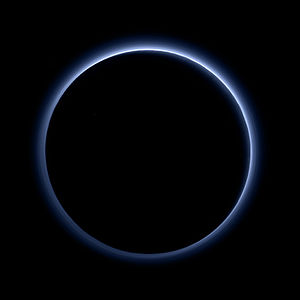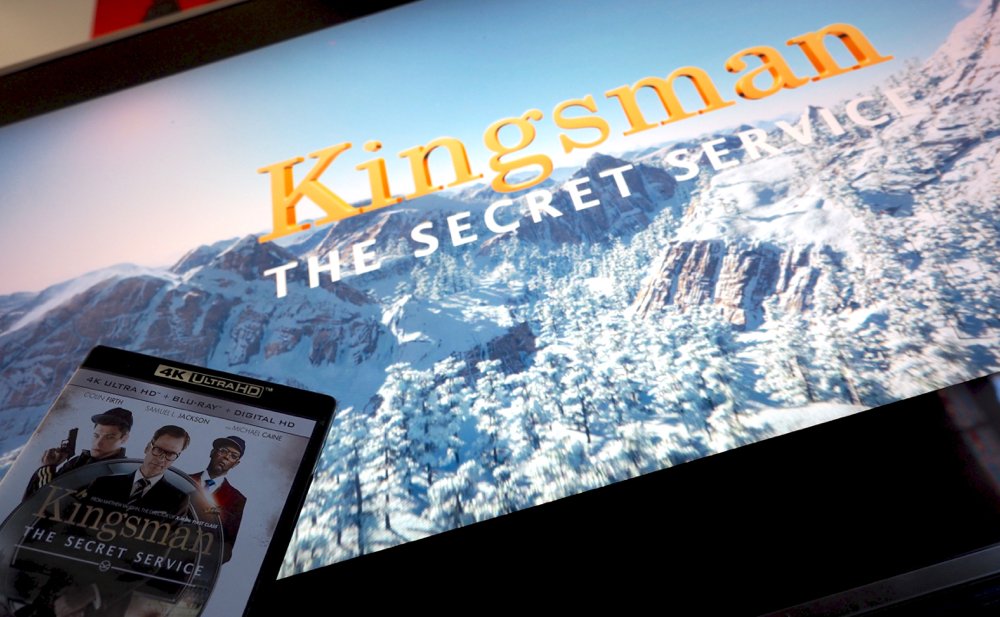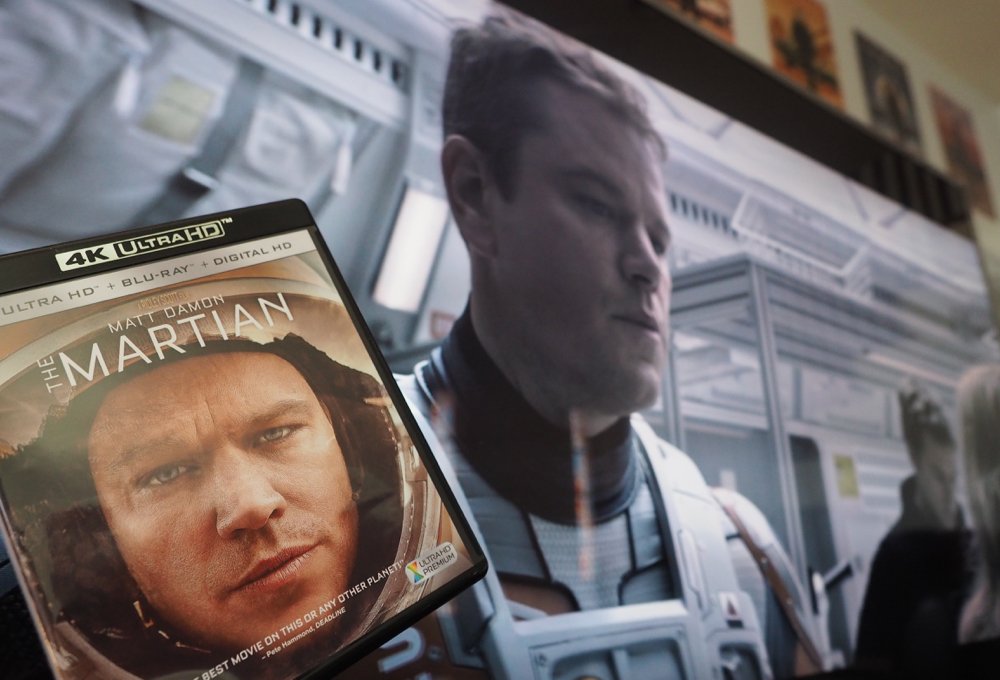L'actu du Blu-Ray Ultra HD
Modérateur: Dunandan
Re: L'actu du Blu-Ray Ultra HD
Pour le prix faut quand même relativiser, il s'agit de 35-39€ pour un combo UHD+BR en sortie officielle. Quand tu vois le prix d'un BR le jour de sa sortie je ne trouve pas ça scandaleux... Et puis ça aura baissé d'ici quelques années puisque ça ne marchera pas. C'est exactement comme le bleu à son lancement, tout le monde trouvait les prix aberrants, au final on y est tous maintenant. Je garde donc tous les messages de ce topic enregistrés, et je les ressortirai d'ici quelques années. 
See ya in another life brother !
-

comICS-soon - Godzilla

- Messages: 13461
- Inscription: Dim 13 Mar 2011, 17:17
- Localisation: Tribune Jonquet - Reims
Re: L'actu du Blu-Ray Ultra HD
Bon ça m'étonnait aussi ça sortira au même prix qu'un bluray normal.
The Martian en UHD Blu-ray : 24,99 us$
http://www.bestbuy.com/site/the-martian-4k-blu-ray-digital-hd-copy/4856504.p?id=3528988&skuId=4856504
The Martian en Blu-ray : 26,99 us$ !
http://www.bestbuy.com/site/the-martian ... Id=4596700
Bon maintenant il y a plus qu'à attendre le milieux de l'année pour voir les premiers titres vraiment intéressant sortir.
Après il faut voir comment le Dolby Vision/HDR va être géré sur ces platines/TV... par ce que bon le HDR bien que potentiellement ça peut apporter plus de détail à l'image ça va surtout eclaicir l'image on va se retrouver avec ce mode HDR avec des film digne du dernier master criterion sur Lady Snowblood avec des couleur flashy qui tape donc très loin de la volonté des directeur photo sur leur film.
avec des couleur flashy qui tape donc très loin de la volonté des directeur photo sur leur film.
En exemple extreme je pense notamment au James Gray, Bardford Young sur A most Violent year ou le boulot de Gordon Willis sur les Parrain, Pakula et les Woody Allen des 70s, le travail sur l'image de ces films volontairement plongé dans le noir... ça risque de dénaturer ces films.
Peur que ça soit la techno useless de trop ce HDR (le grand public va rien comprendre) autant ça a un intérêt quand tu prend des photos perso quand tu manque de lumière... à la limite pourquoi pas sur certain documentaire mais pour du contenu cinéma pour l'instant aucun réal/directeur photo a pris ça en compte lors d'un tournage surtout qu'ils s'embetent tous à surexposer avec des spot leur lieux de tournage.


The Martian en UHD Blu-ray : 24,99 us$
http://www.bestbuy.com/site/the-martian-4k-blu-ray-digital-hd-copy/4856504.p?id=3528988&skuId=4856504
The Martian en Blu-ray : 26,99 us$ !
http://www.bestbuy.com/site/the-martian ... Id=4596700
Bon maintenant il y a plus qu'à attendre le milieux de l'année pour voir les premiers titres vraiment intéressant sortir.
Après il faut voir comment le Dolby Vision/HDR va être géré sur ces platines/TV... par ce que bon le HDR bien que potentiellement ça peut apporter plus de détail à l'image ça va surtout eclaicir l'image on va se retrouver avec ce mode HDR avec des film digne du dernier master criterion sur Lady Snowblood
En exemple extreme je pense notamment au James Gray, Bardford Young sur A most Violent year ou le boulot de Gordon Willis sur les Parrain, Pakula et les Woody Allen des 70s, le travail sur l'image de ces films volontairement plongé dans le noir... ça risque de dénaturer ces films.
Peur que ça soit la techno useless de trop ce HDR (le grand public va rien comprendre) autant ça a un intérêt quand tu prend des photos perso quand tu manque de lumière... à la limite pourquoi pas sur certain documentaire mais pour du contenu cinéma pour l'instant aucun réal/directeur photo a pris ça en compte lors d'un tournage surtout qu'ils s'embetent tous à surexposer avec des spot leur lieux de tournage.


-

Milkshake - Robocop

- Messages: 8665
- Inscription: Dim 13 Sep 2009, 16:55
Re: L'actu du Blu-Ray Ultra HD
Mais le HDR on s'en branle, c'est du gadget comme les indices de fluidité (bientôt le mode 10 millions de hz !), c'est pas vraiment l’intérêt premier de l'UHD.
See ya in another life brother !
-

comICS-soon - Godzilla

- Messages: 13461
- Inscription: Dim 13 Mar 2011, 17:17
- Localisation: Tribune Jonquet - Reims
Re: L'actu du Blu-Ray Ultra HD
J'adore leurs écrans de comparaisons. Sérieux, le screen full HD de Star Trek tout sombre et terne, et l'autre ultra lumineux eclatage de rétine..... Les gars du marketing ont bien travaillé !
Le gap Blu-ray / Blu-ray UHD est moindre que celui entre DVD et BR. De même niveau son, même si l'atmos apporte un "plafond", le gain reste minime face à la claque prise entre du DTS et du DTS HD.
Même chose chez moi. Sans compter que le rayon DVD est toujours plus important que le blu-ray... Ce dernier n'a jamais été porté et mis en avant. Tout le monde parle de DVD, c'est hallucinant.
Et je trouve encore plus hallucinant de voir le nombre de personnes ayant un écran full HD, voire 4K, et s'extasier devant une chaîne de la TNT....
Bref, va falloir que je me fasse à la disparition du physique...
Tout à fait d'accord Comics.
Le gap Blu-ray / Blu-ray UHD est moindre que celui entre DVD et BR. De même niveau son, même si l'atmos apporte un "plafond", le gain reste minime face à la claque prise entre du DTS et du DTS HD.
Mark Chopper a écrit:Je l'ai déjà dit, mais c'est inévitable. Quand je vois que le rayon téléphone ou cafetière de la Fnac de Reims est plus grand que celui-des blu-ray, ça me fait pitié.
Même chose chez moi. Sans compter que le rayon DVD est toujours plus important que le blu-ray... Ce dernier n'a jamais été porté et mis en avant. Tout le monde parle de DVD, c'est hallucinant.
Et je trouve encore plus hallucinant de voir le nombre de personnes ayant un écran full HD, voire 4K, et s'extasier devant une chaîne de la TNT....
Bref, va falloir que je me fasse à la disparition du physique...
Tout à fait d'accord Comics.
"No fate but what we make"
-

lvri - Godzilla

- Messages: 12643
- Inscription: Dim 03 Oct 2010, 09:39
Re: L'actu du Blu-Ray Ultra HD
https://en.wikipedia.org/wiki/List_of_films_shot_on_digital_video_prior_to_2015
Et surtout qu'on va avoir un nombre conséquent de titre (voir liste ci dessus) qui seront de la fausse 4K, tous les films et série shooté en numérique depuis 2000 c'est du 2K/2.8K grand max pour obtenir un master 4K l'image va être gonflé artificiellement.
Donc les Mann, Soderbergh, Fincher... il faudra voir le resultat sauf sur leur tout dernier film ou ils ont pu utilisé des caméra 4K/6K.
Et surtout qu'on va avoir un nombre conséquent de titre (voir liste ci dessus) qui seront de la fausse 4K, tous les films et série shooté en numérique depuis 2000 c'est du 2K/2.8K grand max pour obtenir un master 4K l'image va être gonflé artificiellement.
Donc les Mann, Soderbergh, Fincher... il faudra voir le resultat sauf sur leur tout dernier film ou ils ont pu utilisé des caméra 4K/6K.
-

Milkshake - Robocop

- Messages: 8665
- Inscription: Dim 13 Sep 2009, 16:55
Re: L'actu du Blu-Ray Ultra HD
Lionsgate annonce ses premiers titres en 4K.

Sicario, The Last Witch Hunter, Ender's Game and The Expendables 3 will be available March 1, 2016
Sinon la boite qui produit les docu en Imax va aussi sortir des titres.

Sicario, The Last Witch Hunter, Ender's Game and The Expendables 3 will be available March 1, 2016
Sinon la boite qui produit les docu en Imax va aussi sortir des titres.
The independent Shout! Factory also has announced its intent to release 4K Ultra HD Blu-ray Discs, with an initial slate drawn from IMAX theatrical releases.
Shout! Factory titles include Journey to Space (narrated by Patrick Stewart), Humpback Whales (narrated by Ewan McGregor), Flight of the Butterflies, Rocky Mountain Express, Wonders of the Arctic (narrated by Victor Garber) and The Last Reef: Cities Beneath the Sea.
Space and Whales will be the first to come to market, in late spring or early summer.
-

Milkshake - Robocop

- Messages: 8665
- Inscription: Dim 13 Sep 2009, 16:55
Re: L'actu du Blu-Ray Ultra HD

Premier éditeur européen (en Allemagne pas surprenant vu que c'est le marché dominant en terme de vente en Europe, le nombre de volume vendu dégringole moins vite que dans le reste de l'Europe) à sortir des titres dont deux shooté en 65mm dont 1 seul film le reste c'est du docu.

Quelqu'un l'a vu ce western obscure ? 1966 : La Pampa sauvage (Savage Pampas)
-

Milkshake - Robocop

- Messages: 8665
- Inscription: Dim 13 Sep 2009, 16:55
Re: L'actu du Blu-Ray Ultra HD

Déjà que j'ai pas l'intention d'investir dans le support, alors sortir ce genre de trucs venu de nulle part au lancement, c'est carrément du suicide.
-

Jed_Trigado - Godzilla

- Messages: 14593
- Inscription: Sam 18 Oct 2014, 22:41
- Localisation: On the fury road...
Re: L'actu du Blu-Ray Ultra HD
ça tease les premiers retours sur les bluray 4K devrait débarquer demain sur http://www.highdefdigest.com/ et d'autres sites par la suite.




-

Milkshake - Robocop

- Messages: 8665
- Inscription: Dim 13 Sep 2009, 16:55
Re: L'actu du Blu-Ray Ultra HD
ça sent l'arnaque ces premiers titres 4k sortie à la va vite, le studio serait parti du master 2K pour faire leur bluray 4k. En gros on nous vend de la fausse 4K pour l'instant. 
Donc il va falloir attendre les premiers films dont le master de post prod est de la véritable 4K.
http://ultrahd.highdefdigest.com/30659/themartian4kultrahdbluray.html
http://ultrahd.highdefdigest.com/30687/kingsmanthesecretservice.html
En fait voici la liste des films qui sortent en bluray 4K et à priori il n'y a que chez Sony ou ça sera de la véritable 4K, le reste ça va être de l'upscale.

Donc il va falloir attendre les premiers films dont le master de post prod est de la véritable 4K.
http://ultrahd.highdefdigest.com/30659/themartian4kultrahdbluray.html
However, all of these positives come at a price: noise. As Shannon mentioned in his Blu-ray review, this production combined numerous sources into a 2K DI master. According to Fox, this Ultra HD Blu-ray received a new color grading, and represents a combination of upscaled 2K material and downrezzed 5K content. I suspect upscaling is an issue with this release.
http://ultrahd.highdefdigest.com/30687/kingsmanthesecretservice.html
I honestly didn't expect much improvement in perceived resolution, given that this movie was photographed and finished in 2K, and then upscaled for this release.
En fait voici la liste des films qui sortent en bluray 4K et à priori il n'y a que chez Sony ou ça sera de la véritable 4K, le reste ça va être de l'upscale.
Here’s the dirty secret about the industry’s move to 4k or higher displays: The majority of modern movies are either photographed digitally at 2k resolution or have a 2k Digital Intermediate. While it’s true that some movies are indeed starting to be photographed with 4k cameras (and movies shot on film may get scanned at 4k resolution), most of them still get downgraded to 2k for the post-production workflow. The higher pixel resolution of 4k requires a big increase in bandwidth resources that most post houses can’t handle. And, ultimately, most viewers can’t tell the difference between 2k and 4k anyway.
Think I’m exaggerating? Let’s look at some of the launch titles that have been announced for early release on the Ultra HD Blu-ray format this spring.
Here are the titles that Warner Home Video has announced:
‘The Lego Movie’ – Animated on a 2k DI
‘Mad Max: Fury Road’ – Shot in 2k, with a 2k DI
‘Man of Steel’ – Shot on 35mm, with a 2k DI
‘Pacific Rim’ – Shot in 5k, but only a 2k DI
‘Pan’ – Shot in 3k, with a 2k DI
‘San Andreas’ – Shot in 3k, DI is not listed but probably 2k
Yes, every single film that Warner plans to release on the 4k Ultra HD format is a 2k movie.
The 20th Century Fox release titles are only marginally better:
‘Exodus: Gods and Kings’ – Shot in 5k, with a 2k DI
‘Fantastic Four’ – Shot in 2k, with a 2k DI
‘Kingsman: The Secret Service’ – Shot mostly in 2k, with a 2k DI
‘Life of Pi’ – Shot in 2k, with a 2k DI
‘The Martian’ – Shot in 5k, with a 2k DI
‘The Maze Runner’ – Shot mostly in 2k mixed with some 5k, with a 4k DI
‘Wild’ – Shot in 2k, with a 2k DI
‘X-Men: Days of Future Past’ – Shot in 2k, with a 2k DI
That’s 13 launch titles from two major studios, and only a single movie was actually produced at 4k resolution (‘The Maze Runner’) – and even that one was mostly photographed in 2k. And these aren’t just old movies made before 4k was possible. Even major big-budget tentpole blockbusters from the past year were made in 2k. Many more will continue to be made in 2k this year and going forward too.
Only Sony appears to have a genuine commitment to making movies in 4k. Here are that studio’s Ultra HD Blu-ray launch titles:
‘The Amazing Spider-Man 2’ – Shot on 35mm, with a 4k DI
‘Chappie’ – Shot in 5k, with a 4k DI
‘Hancock’ – Shot on 35mm, with a 4k DI
‘Pineapple Express’ – Shot on 35mm, with a 2k DI
‘Salt’ – Shot on 35mm, with a 4k DI
‘The Smurfs 2’ – Shot in 4k, with a 4k DI
-

Milkshake - Robocop

- Messages: 8665
- Inscription: Dim 13 Sep 2009, 16:55
Re: L'actu du Blu-Ray Ultra HD
Pas la joie ces bluray 4K au rabais en gros ça équivaut à du bluray normal avec une colorimétrie retouché.
http://ultrahd.highdefdigest.com/30647/themazerunnerthescorchtrials.html
http://ultrahd.highdefdigest.com/30689/ ... luray.html
http://ultrahd.highdefdigest.com/30647/themazerunnerthescorchtrials.html
One area of concern was how well this movie would transfer over to the higher resolution since it was not originally shot in native 4K. The filmmakers used the Arri Alexa XT Plus, which according to manufactures shoots natively at 3.2K at Rec.709, and mastered into a 2K DI. It's unknown if Fox went back to the original elements for this new release or simply upscaled from the DI and whether they performed a new color grade.
http://ultrahd.highdefdigest.com/30689/ ... luray.html
One area of concern was how well this movie would transfer to the 4K resolution since it was originally shot in native 5K thanks to the Red Epic Dragon camera system, which according to manufactures is capable of 6K while shooting natively in DCI-P3. However, the raw information was later mastered in a 2K digital intermediate, and I suspect, based on my viewing experience, that this transfer is likely an upconvert from the DI with new color grading, not a wholly new remaster from the original source.
-

Milkshake - Robocop

- Messages: 8665
- Inscription: Dim 13 Sep 2009, 16:55
Re: L'actu du Blu-Ray Ultra HD
Warner annonce jusqu'à 70 titres d'ici la fin de l'année c'est dans ce lot qu'on devrait avoir les films les plus intéressant.
Dont la moitié dispo seulement en stream car la plupart de ces films ont besoin de disc bluray 100go pour l'instant ça ne va que jusqu'à 66go. Donc là il y a une grosse limitation technique notamment pour les films qui tourne autour de 2h30 ou plus.
Sinon il confirme que la plupart des films notamment tous les blockbuster bourré de FX, les FX sont fait en 2K (sinon les FX coute trop cher à faire). Donc la plupart des titres qui sortent c'est de l'upscale 2K -> 4K.
Donc il y a aura très peu de véritable titre 4K dans le lot.
http://www.warnerbros.com/blogs/2016/02/23/wb-qa-jim-wuthrich
Dont la moitié dispo seulement en stream car la plupart de ces films ont besoin de disc bluray 100go pour l'instant ça ne va que jusqu'à 66go. Donc là il y a une grosse limitation technique notamment pour les films qui tourne autour de 2h30 ou plus.
Sinon il confirme que la plupart des films notamment tous les blockbuster bourré de FX, les FX sont fait en 2K (sinon les FX coute trop cher à faire). Donc la plupart des titres qui sortent c'est de l'upscale 2K -> 4K.
Donc il y a aura très peu de véritable titre 4K dans le lot.
http://www.warnerbros.com/blogs/2016/02/23/wb-qa-jim-wuthrich
-

Milkshake - Robocop

- Messages: 8665
- Inscription: Dim 13 Sep 2009, 16:55
Re: L'actu du Blu-Ray Ultra HD
Des films bourrés de CGI upscalés en 4K, ça va être super classe..... 
Pour le moment, ce support me laisse de marbre. OK, visuellement ça sera plutôt chouette, mais rien de plus. Les pistes sons ne profitent même pas de ce nouveau support et restent les même que celles des blu-ray.
Quand je repense au gap DVD/BR, là l'investissement valait le coup.... Ici, franchement, non, sauf pour ceux ayant déjà investi (j'espère pour eux qu'ils ont acheté les TV ayant la norme définitive....) ou en passe de changer leur vieillissant matos.

Pour le moment, ce support me laisse de marbre. OK, visuellement ça sera plutôt chouette, mais rien de plus. Les pistes sons ne profitent même pas de ce nouveau support et restent les même que celles des blu-ray.
Quand je repense au gap DVD/BR, là l'investissement valait le coup.... Ici, franchement, non, sauf pour ceux ayant déjà investi (j'espère pour eux qu'ils ont acheté les TV ayant la norme définitive....) ou en passe de changer leur vieillissant matos.
"No fate but what we make"
-

lvri - Godzilla

- Messages: 12643
- Inscription: Dim 03 Oct 2010, 09:39
Re: L'actu du Blu-Ray Ultra HD
A moins d'avoir un projo (et encore, je dis ça car c'est un système de diffusion que je ne connais pas), l'intérêt du 4K pour un usage "familial" est assez limité. Le Blu-Ray 2K offre tout le confort nécessaire pour les écrans actuels, et, a moins de vivre dans un château, il y a quand même peu de chance qu'un jour on se retrouve avec des écrans de 200 cm chez soi.
Format d'autant plus inutile qu'on sait que le 8K est déjà quasiment prêt. Bref, un format qui aurait du être réservé aux professionnels et qui va sans doute précipiter un peu plus la chute du format physique, les gens étant lassés par les innombrables changement de format.
Format d'autant plus inutile qu'on sait que le 8K est déjà quasiment prêt. Bref, un format qui aurait du être réservé aux professionnels et qui va sans doute précipiter un peu plus la chute du format physique, les gens étant lassés par les innombrables changement de format.
-

Val - Terminator

- Messages: 18569
- Inscription: Mer 27 Aoû 2008, 14:51
Qui est en ligne
Utilisateurs parcourant ce forum: Aucun utilisateur enregistré et 6 invités
Founded by Zack_
Powered by phpBB © phpBB Group.
Designed by CoSa NoStrA DeSiGn and edited by osorojo and Tyseah
Traduction par phpBB-fr.com

Powered by phpBB © phpBB Group.
Designed by CoSa NoStrA DeSiGn and edited by osorojo and Tyseah
Traduction par phpBB-fr.com





